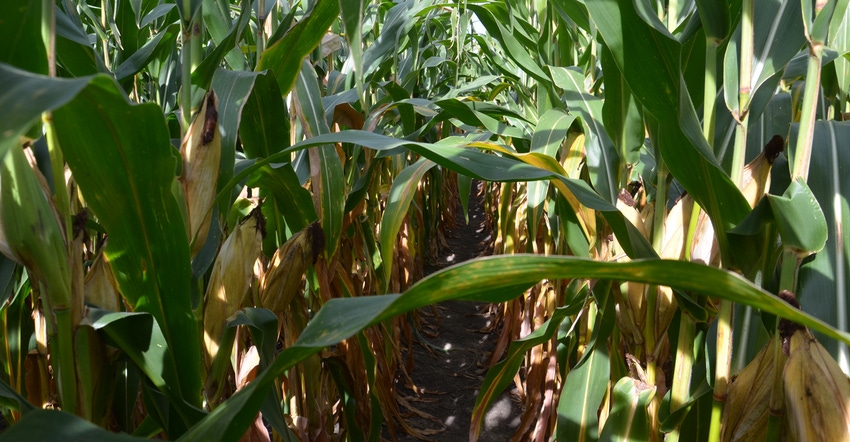
The highest entry ever recorded in the National Corn Growers Association yield contest occurred in 2019. David Hula of Virginia harvested 616 bushels per acre on a 10-acre plot. That puts him in a select category with other corn-growing pioneers who posted barrier-breaking yields in their era. They include Herman Warsaw, Illinois; Francis Childs, Iowa; and Randy Dowdy, Georgia.
Recently, Bob Nielsen, Purdue University Extension corn specialist, studied the 2018 summary guidebook of NCGA winners, looking for possible common threads that would point the way to higher yields.
What he didn’t find …
Figures don’t lie, but liars figure … or so the old saying goes. It likely also applies to charts and graphs. Looking at information from annual NCGA guides, Nielsen prepared an impressive bar graph that seems to indicate something most winners share: color of equipment! Is that the key to high yields? Nielsen quips. From 2014 through 2018, well over half the winners had the same color of planter and combine.
On a more serious note, Nielsen says some argue aggressively that you need high plant populations to achieve record-setting yields. “Maybe so, and then again, maybe not,” he says. “A plot of plant populations from nonirrigated winners from 2007 through 2018 doesn’t show a trend toward increasing yield with increasing population. Plot it on a map and it’s a straight line, not an increasing line showing more yield with more population. There’s essentially no relationship between yield and population.”
For example, 13 winning entries had populations of 30,000 plants per acre or less. Some 17 entries had 40,000 plants or more. The majority were between 30,000 and 40,000.
“Some also aggressively argue that you need high nitrogen rates to achieve super-high corn yields,” Nielsen says. “Again, data from 2011 through 2018 nonirrigated category winners doesn’t bear it out. Again, there is essentially no relationship between a winning entry and nitrogen rate.”
Four winners applied no nitrogen at all. Twenty-four applied a total of 200 pounds of nitrogen per acre or less. Thirty-three applied 300 pounds per acre or more. Five applied 400 pounds per acre or more. Theirs weren’t the highest yields. In fact, they weren’t appreciably higher than the four winners who applied no nitrogen.
What he did find …
“The common thread was really attention to detail,” Nielsen says. “You can see it if you study how the pioneers mentioned earlier obtained top yields for their day. You can also see it by studying complete records of other top corn growers.
“It’s not a matter of blindly shooting at a target and hoping it works,” he continues. “And it’s not just throwing the kitchen sink and everything else at a field.
“Those that succeed tend to approach growing high-yield corn from a thoughtful agronomic perspective. They never stop learning; they identify, locate and diagnose yield-limiting factors; and they make sound agronomic decisions based on facts and data, not simply on logic.”
Nielsen loves to let would-be high-yield corn growers chew on this quote from none other than Mark Twain. “It ain’t what you don’t know that gets you into trouble; it’s what you know for sure that just ain’t so!”
“You’ve got to critically evaluate what you read, see and hear,” Nielsen concludes.
About the Author(s)
You May Also Like




